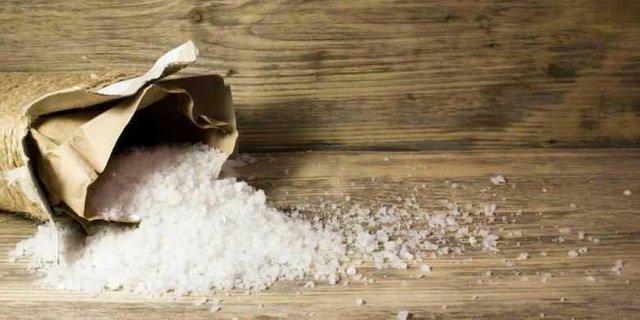
Salt is one of the most common cooking spices in the kitchen. Usually salt is sprinkled on food to taste.
However, what happens if salt is sprinkled into the atmosphere? What will happen?
A crazy idea, sprinkling large amounts of salt into the atmosphere was triggered by Robert Nelson of the planetary Science Institute and his colleagues. They propose this plan to prevent climate change.
In their report, researchers say salt is a highly reflective substance. This means that salt has the potential to reflect sunlight into outer space.
In other words, sprinkling salt into the atmosphere is expected to cool the earth.
The idea of salt in the atmosphere is one of the latest attempts to keep pace with climate change. During this time, humans are considered failing to significantly reduce greenhouse gas emissions such as carbon dioxide, which increases the temperature of the earth.
The idea is to sprinkle salt into the upper troposphere, the atmospheric layer where most commercial aircraft fly when cloud conditions are less friendly.
Other Scientists' Response
Unfortunately, this idea is questionable by other climate scientists. That's because the idea is a geoengineering or a deliberate large-scale effort to change the environment as a means of combating climate change.
Even so, some other scientists welcomed the idea. One of them is Michael Mann, a professor of meteorology at Penn State University.
"(But) most of these geoengineering schemes, though potentially attractive on the surface, look full of potential undesirable consequences when you see them in more detail," he continued.
Not the first
In fact, this idea is not the first proposed geoengineering to tackle climate change. Previously, other scientists considered to inject tiny particles known as aerosols into the stratosphere, the region above the toposphere.
The aerosol particles are also believed to be salt, acting to cool the earth.
This happened once when Iceland's volcano erupted from 939 to 940 BC, but of course with natural aerosols. This phenomenon causes one of the coldest summers experienced by Nothern Hemisphere in 1,500 years.
Unfortunately, the idea of using aerosol is also opposed by some parties. The reason is the use of aerosols such as diamond dust or alumina can be harmful to the earth's ozone layer and human health.
Salt vs. Aerosol
However, by 2015 when studying salt that evaporates on the surface of the solar system, Nelson realizes something. He found that table salt could be a possibility (aerosol replacement).
In addition, salt is more reflective than alumina and is not harmful to human health. When milled into small particles and released into the upper troposphere, salt will not block the infrared heat released by the earth.
According to Nelson, this will actually help the earth to become cooler.
Although at a glance this idea is very good, but the implementation proposal is still in its early stages.
"It's hard to stress enough more research is needed to verify its application," says Kelly McCusker, a climate scientist at Rhodium Group, an independent research firm in New York.
"(Moreover), the arcane refuge has so far been measured in the laboratory, but we do not know how it will change during delivery (to the top troposphere)," added McCusker.
McCusker added, how much salt is needed to reduce the temperature is not clear.
Even so, MecCusker and Mann agreed that the best way to tackle global warming is to reduce greenhouse gas emissions around the world.
"The only safe way to tackle climate change is to address its root cause, our continuing dependence on fossil fuel burning," Mann said.
Link Source
Follow Me @muhammadibra

You got a 18.30% upvote from @nado.bot courtesy of @muhammadibra!
Send at least 0.1 SBD to participate in bid and get upvote of 0%-100% with full voting power.
Downvoting a post can decrease pending rewards and make it less visible. Common reasons:
Submit
Interesting
Downvoting a post can decrease pending rewards and make it less visible. Common reasons:
Submit